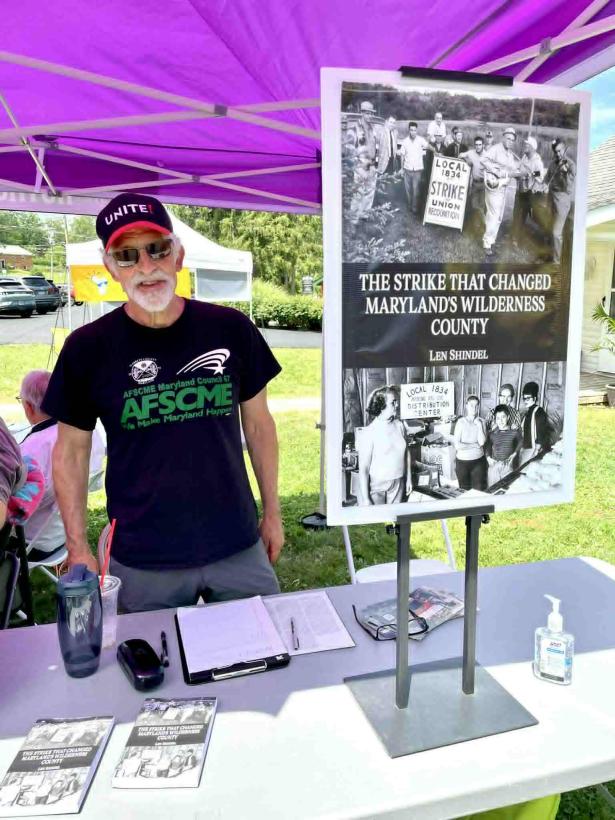We often hear that working class folks in conservative communities are hopelessly drawn to the dominant storylines of the wealthy and powerful. That they don’t want to know about labor or “people’s” history.
Well, Len Shindel has proven the naysayers wrong, big time. He has taken his shoe-leather history of a 1970, 8-month-long strike of public sector workers to the people of Western Maryland, and they have embraced him and his book with open arms.
Here’s how he did it.
Moving to Garrett County, Md. after retiring from his union job, Len decided, upon the advice of a friend, to investigate an 8-month long strike by the county’s road workers that was the longest public worker strike in U.S. history. So, he went to the local historical society, where he found nothing about the strike.
Hmmm…
He went to the library, researched two local newspapers and perused the minutes of the county’s commissioners. More importantly, for two years, he traveled across the county, the second largest in Maryland, interviewing the small number of strikers still alive and their families.
Folks on both sides of the conflict and the political spectrum took him in and enthusiastically shared their experiences. Len listened because he wanted to tell the real story. And he wanted to tell it accurately.
Once Hard Ball Press published The Strike That Changed Maryland’s Wilderness County, printed by a union shop, Len purchased 300 copies (at a nice author discount) and began speaking at libraries, bookstores, county fairs and any gathering that would welcome him. People who had been involved in the strike from either side and their offspring scooped up the book. Many shared it with family and friends. Others invited
him to still more events.
While Len expected that the number of individuals he interviewed in the county, the state’s third lowest in population density but chock full of large, extended families, would increase the book’s readership, he’s been astounded by its reception.
Maybe that’s because the strikers mobilized politically, making the conflict a decisive turning point for the county’s leadership and culture. Len said. “The pride readers took in family members standing up for themselves was only enhanced by the influence of the struggle they waged.”
Many of the folks reading his book aren’t regular book readers. Maybe part of the reason is that local history books of the region’s economy—once dominated by coal, logging and farming—mostly feature the wealthy and powerful.
“My book,” says Shindel, “is quenching the parched throats of those who are sick of seeing the wealthy and powerful credited with everything good in the county and nation and the working families castigated for their backwardness by the privileged members of both political parties.”
Perhaps because Len tells the story from the point of view of the working people involved, the book has been praised by locals of all political stripes. It turns out even people who express anti-union views want to know their history and want to have the facts. At book talks, family members of strikers have asked why their fathers, mothers and grandparents avoided discussing the conflict.
This deep dialogue and inquiry is a pretty good start at honoring those, past and present, who fight for justice on the job.
Thanks to the authors for submitting this article to Portside.


Spread the word